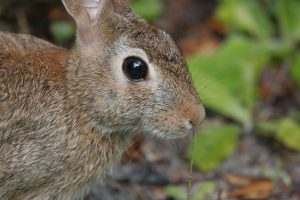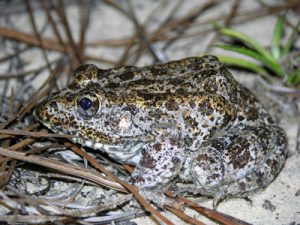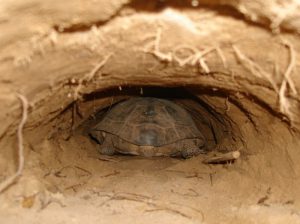Gopher Tortoises Spend Eighty Percent of Their Time in Burrows
You may have been driving down a road in the middle of nowhere Florida and noticed a large tortoise crossing. It most likely was a gopher tortoise (Gopherus polyphemus). These ancient creatures have been around longer than people who have inhabited Florida. Unfortunately, today the people of Florida are inhabiting their space. That is because they live in the uplands habitats of Florida, ideal for development. They prefer well-drained sandy soils so they can nest and dig their burrows in which they spend 80% of their time in.
A Keystone Species
Gopher tortoises build burrows in pine forest uplands, pastures and even on coastal dunes. They build multiple burrows migrating back and forth between them. These burrows can average about 15 feet in length and keep a fairly constant temperature and humidity year round. Gopher tortoises are commonly referred to as a keystone species because they share their burrows with more than 350 other species. If you were to peak inside one, you might find rabbits, Florida mice (Podomys floridanus) using it as a den site, gopher frogs (Lithobates capito), a species of special concern and other invertebrates seeking refuge.


Conservation Status
In Florida, gopher tortoises are listed as a State-designated Threatened Species. Therefore, you cannot handle them, destroy their burrows or relocate without a valid permit. If you do see one crossing a busy road, Florida Fish and Wildlife Conservation Commission (FWC) does allow permission to help it cross in the direction it was heading. The FWC conserves gopher tortoises by increasing and improving habitat, restoring populations and minimizing loss. If you are a landowner there’s opportunities to help gopher tortoises. You can become a gopher tortoise land recipient.
We can view the outbreak as a wildfire sweeping through our habitat. So be like a gopher tortoise and stay in your burrow.

Sources:
Gopher frogs, Burrows, and Fires: Interactions in the Longleaf Pine Ecosystem
 0
0
